On Saturday, October 29th, the culmination of careful breeding selection, countless hours of work, many miles spent on the road, and many hopes and dreams will come to fruition as the gates of the Celeste Arena open and the Masters Western Pleasure and Hunter Under Saddle Horses take center stage at the All American Quarter Horse Congress.
For spectators, there will only be a pen of maiden two-year-olds and excitement as one champion per class is crowned. Behind the scenes is the long journey that has led to this one moment. The late nights, early mornings, hours in the saddle, blood, sweat, and tears will all materialize as they step out into the bright lights for their debut in front of a packed house.
Selecting a Masters Horse
Although many trainers start talented two-year-olds each year, there are certain qualities that make a horse a prime candidate for the Masters class. Three-time Masters Champion, Jay Starnes, likes to choose his horse as early as possible and has learned to trust his gut when he is choosing “the one.” The horse Jay chooses for the Masters must be exceptional legged, eye appealing, and trainable.
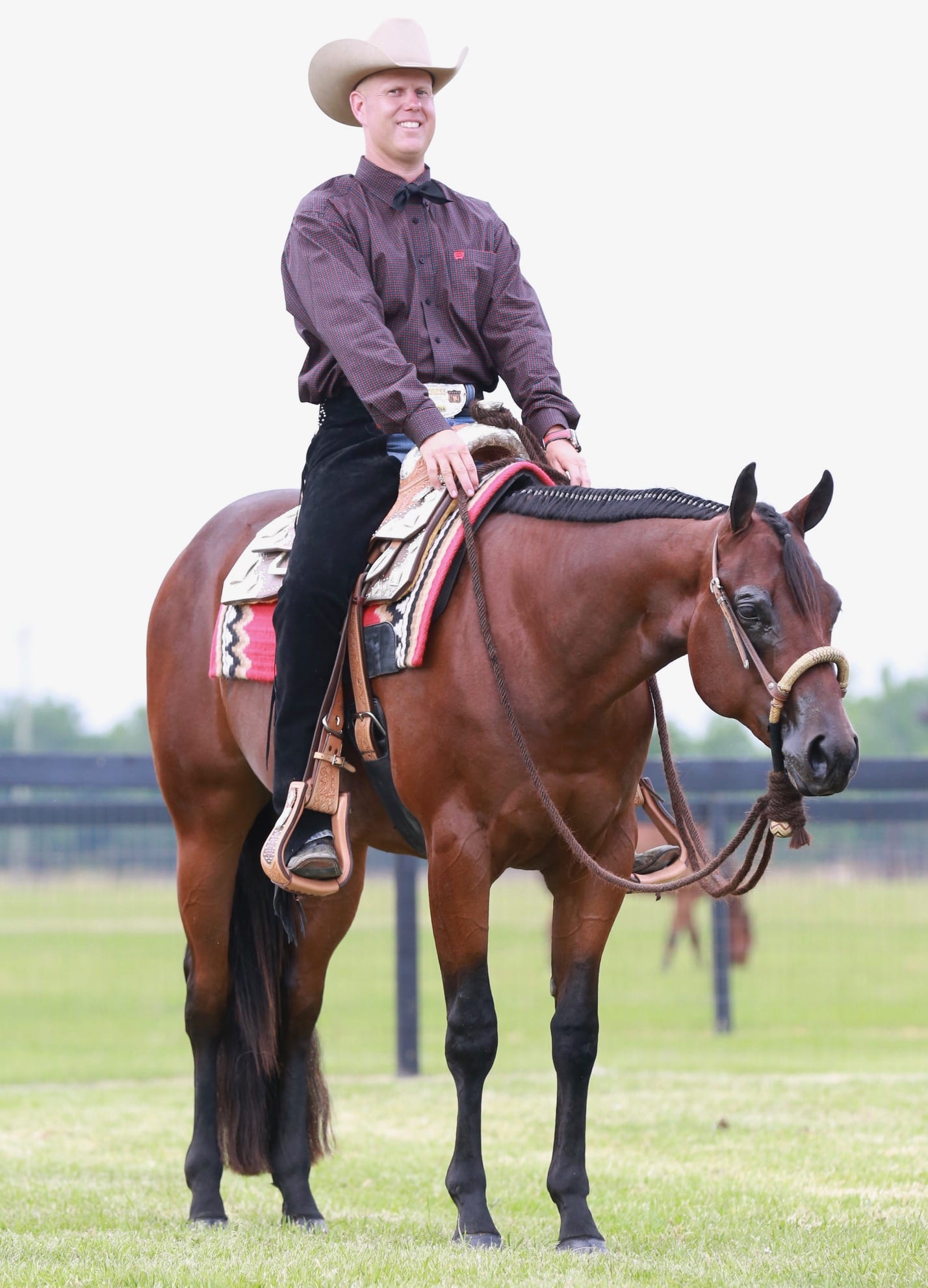 “I want a horse that is the total package. The Masters horse needs to be pretty, a great mover, sensible, quiet, and trainable,” he says (pictured right with this year’s entry, Extremely Late).
“I want a horse that is the total package. The Masters horse needs to be pretty, a great mover, sensible, quiet, and trainable,” he says (pictured right with this year’s entry, Extremely Late).
The atmosphere of the Masters is very intense for a maiden horse and it takes a special horse to be able to hold it together with the high pressure of the Masters class. Additionally, the owners of the horse have to be willing to take the gamble that comes along with a maiden event.
Masters veteran, Brian Baker, acknowledges that along with entering the class comes a lot of variables. One go around, holding out all year to show in one class, and the fact that there is an arena full of maiden two-year-olds all making their debut at the same time makes it all that more pressure packed.
“When you are showing a maiden two-year-old, you don’t know what to expect,” says Baker. “You are just hoping they show as well as they can and you never know what is going to happen.”
For these reasons, participating in this class is not for the faint of heart and sometimes can end in disappointment because of the uncertainty that comes along with inexperience.
Training a Masters Horse
Both veteran and first-time Masters competitors agree that consistency is key when preparing a horse for the Masters. Masters veteran, Shane Dowdy, does not change his training program despite having the lofty goal of Masters Class on the horizon. “I train my Masters horses the same as the rest of them. With the horses I choose for this class, for the most part, if they start out well, they continue to develop with a consistent program throughout the year.”
 First time Masters competitor, Taft Dickerson (pictured left), echoes Dowdy and although he rides his Masters horse several days a week, he allows the horse to dictate the intensity of the program. “I ride six days a week, but if the horse is good, I will back off. There is no set rule. I just take it one day at a time.” Taft also values the importance of getting his Masters horse exposed to many different scenarios in order to make sure the atmosphere of the class is not too overwhelming for the horse. “I have tried to go through every possible scenario with my Masters horse. I even took him on a trail ride on Labor Day weekend where there were bikes, bridges, cars, and a river on one side at times.”
First time Masters competitor, Taft Dickerson (pictured left), echoes Dowdy and although he rides his Masters horse several days a week, he allows the horse to dictate the intensity of the program. “I ride six days a week, but if the horse is good, I will back off. There is no set rule. I just take it one day at a time.” Taft also values the importance of getting his Masters horse exposed to many different scenarios in order to make sure the atmosphere of the class is not too overwhelming for the horse. “I have tried to go through every possible scenario with my Masters horse. I even took him on a trail ride on Labor Day weekend where there were bikes, bridges, cars, and a river on one side at times.”
Experts agree: Part of preparing for the Masters is exposure to the horse show environment. Second time Masters competitor, Heidi Piper, who will be competing in the Hunter Under Saddle class, admits that her horse has received most of her training while on the road. “My horse this year is green and had been under saddle very minimally when I got her in training in June. We went right from our second ride out of the round pen to our first horse show and she has really come along while hauling down the road with us.”
Starnes has also found that hauling his Masters horses down the road is part of the recipe to his success. “I haul my Masters horses everywhere to get them out and used to the atmosphere at the horse show. I find that being in that environment helps them to handle the pressure of the atmosphere on the night of the big class.”
Meet some of the Stars of the 2016 Masters Classes
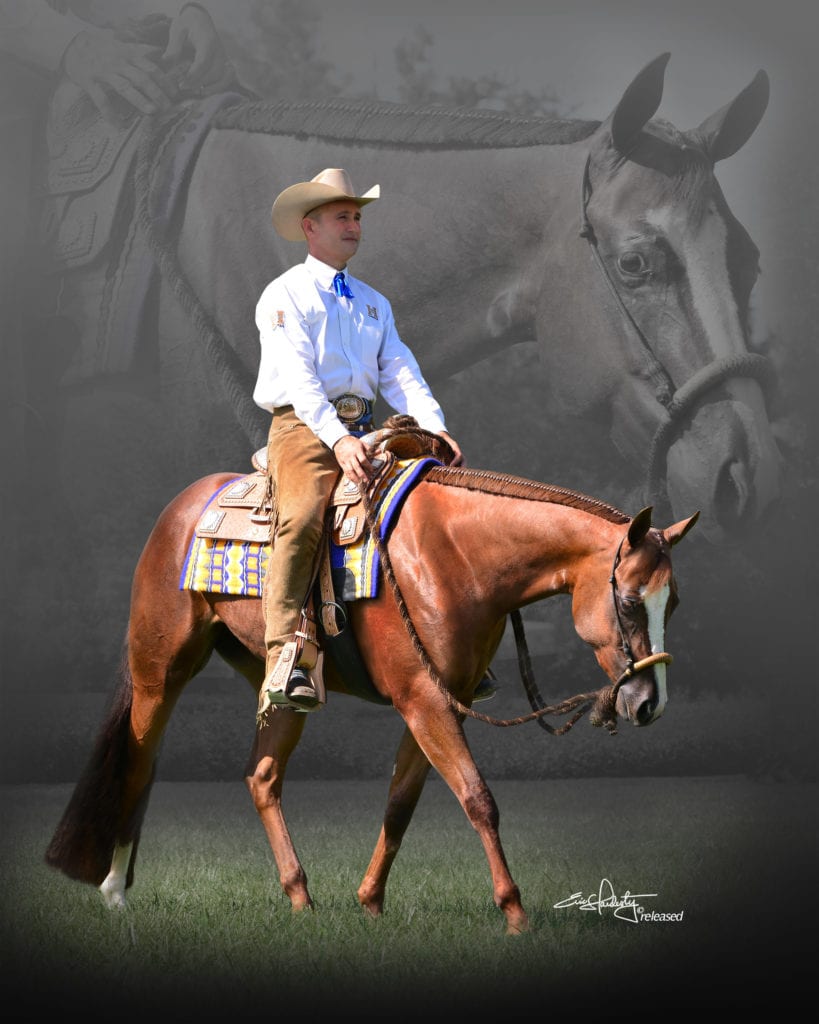 Among the field of the competitive Masters Western Pleasure Class will be Brian Baker showing, Daddy Doesnt Know, owned by Gail and Caroline Cavallo of St. Louis, Missouri (pictured right). This fancy filly, known as “Pepper” around the barn was sent to Brian to start by Carl and Trisha Yamber and was recently purchased by the Cavallo family. They plan on keeping her with Brian to do the western pleasure futurities through her three-year-old year before starting her all around career with Blake and Kendra Weiss.
Among the field of the competitive Masters Western Pleasure Class will be Brian Baker showing, Daddy Doesnt Know, owned by Gail and Caroline Cavallo of St. Louis, Missouri (pictured right). This fancy filly, known as “Pepper” around the barn was sent to Brian to start by Carl and Trisha Yamber and was recently purchased by the Cavallo family. They plan on keeping her with Brian to do the western pleasure futurities through her three-year-old year before starting her all around career with Blake and Kendra Weiss.
The Cavallos have never owned a western pleasure horse, let alone an entry in the Masters. Her registered name, Daddy Doesnt Know, was not her original registered name. The Cavallos selected the name to reflect the humorous relationship between Caroline’s dad and their horse hobby.
“We named her Daddy Doesnt Know because the horses have always been something my mom and I did together and we always joke that my dad doesn’t know how much all of this costs and what we do at the horse shows. Blake Weiss came up with the name and we all had a good laugh and agreed that it was perfect,” laughs Caroline. Along with her memorable name, Brian describes Pepper as “the total package” and says she has a tremendous amount of self-carriage and eye appeal.
Masterson Farms’ pick for t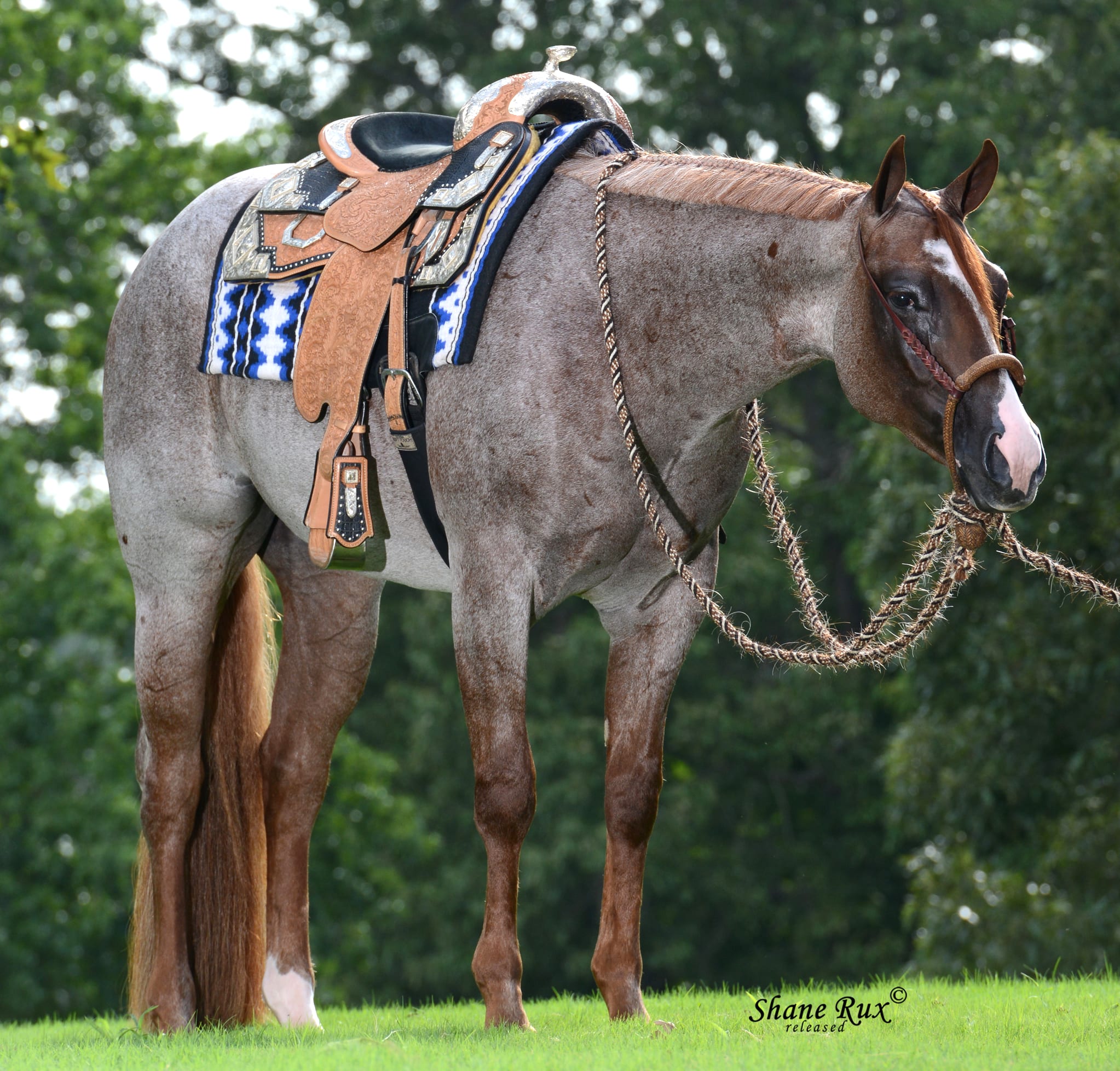 heir 2016 Masters Western Pleasure entry is KM Genuinely Best, a.k.a. Benny, a 2014 red roan gelding by RL Best Of Sudden and out of Genuine Goodbar.
heir 2016 Masters Western Pleasure entry is KM Genuinely Best, a.k.a. Benny, a 2014 red roan gelding by RL Best Of Sudden and out of Genuine Goodbar.
“Benny is a really good, strong two-year-old,” said Ken Masterson. “He is very quiet and has come along so well in his training. A lot goes into the decision of who to enter in the Masters as these are all two-year-olds who have never been shown. You have to try and make a good decision on who can handle it, and we are confident Benny can do it.”
Casey Willis, who is piloting Benny in the class , “He has a really good look and is so talented. We also get along well with each other so it’s a really good fit.”
Taft Dickerson will show, U Cant Hide Redneck (Stormy) for owner Brent Lawson. First time exhibitor and first time Masters owner are elated to show a horse that has been in the program since day one.
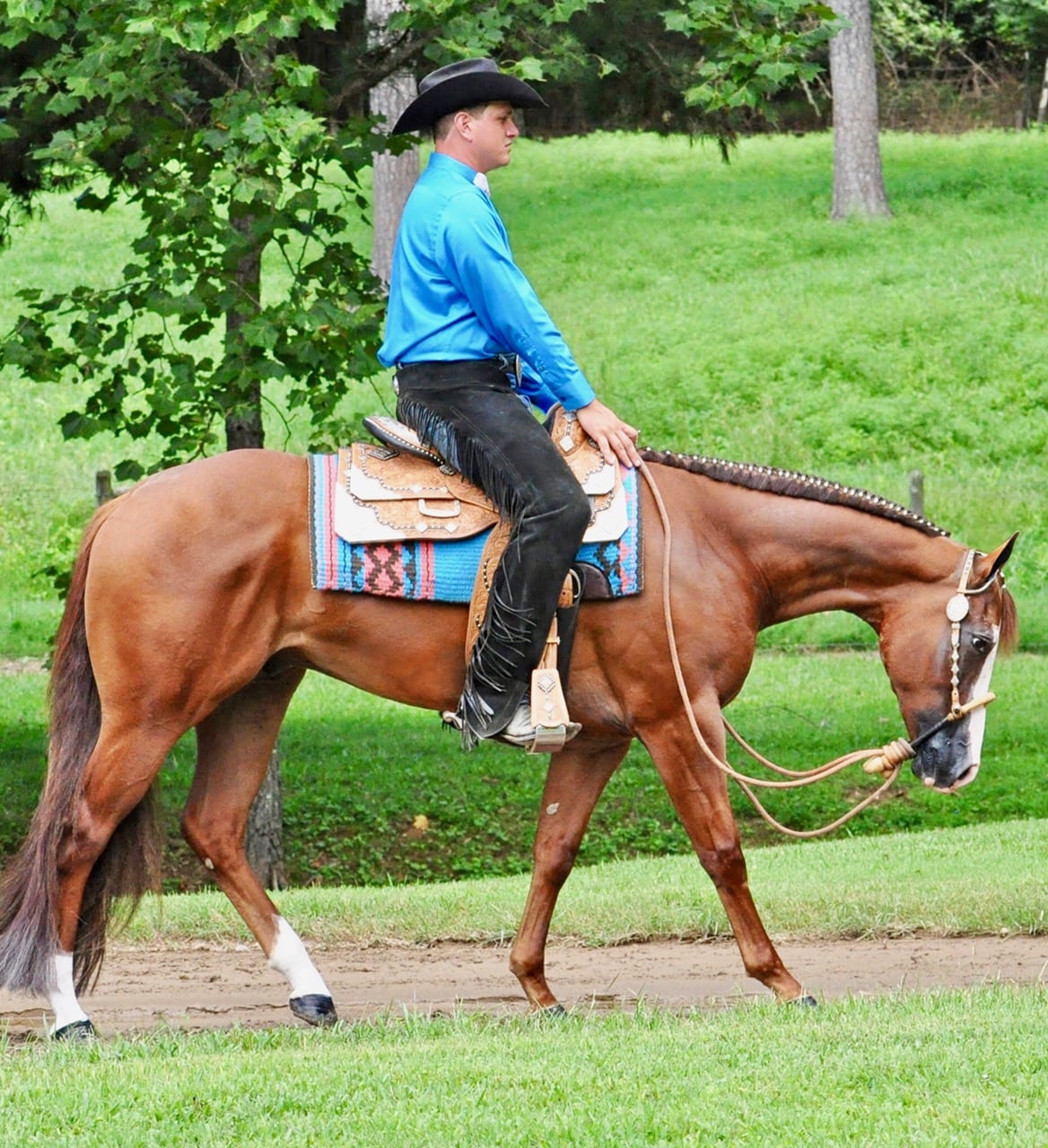 “Stormy (pictured right) was born three weeks early during a snowstorm and I was the first one to lay eyes on him. I halter broke him, put the first ride on him, and have been there for any milestones with this horse. It is so exciting to show a horse that I have been a part of since day one,” says Taft.
“Stormy (pictured right) was born three weeks early during a snowstorm and I was the first one to lay eyes on him. I halter broke him, put the first ride on him, and have been there for any milestones with this horse. It is so exciting to show a horse that I have been a part of since day one,” says Taft.
He describes Stormy as “elegant” and cites his sweeping hock and steady topline as some of his most positive attributes.
Jay Starnes will show Extremely Late, owned by Brenda Yates. Extremely Late, also known as “Flynn,” was named by Jay and Kristy’s son, Logan after one of the pirates in the Disney Show, Jake and the Never Land Pirates. Jay chose Flynn to be his Masters horse early on and says he was a standout from the beginning. “I have always liked him in the field. He has always caught my eye and ever since we started him under saddle, he continues to get better and better.” According to Jay, Flynn has the looks, legs, and personality to make him the ideal contender for the class.
Shane Dowdy will show, Its A Pretty Thing for owner Amy Gumz. Sired by Amy’s stallion, Its a Southern Thing and known around the barn as “Callie,” Its A Pretty Thing is one of the first five foals from Its a Southern Thing’s first breeding test crop. Shane was asked to look at this filly while visiting the colt breakers and immediately put her on the trailer for Amy. “Amy didn’t know I was bringing her home, so if you hear I stole her, I pretty much did,” laughs Shane. He calls Callie “the complete package: pretty, very trainable, and smart.”
 In the Masters Hunter Under Saddle Class, Heidi Piper will show Al American Girl by Allocate Your Assets for owner Tera Gore.
In the Masters Hunter Under Saddle Class, Heidi Piper will show Al American Girl by Allocate Your Assets for owner Tera Gore.
Affectionately known as “Dixie,” this filly was started late but has come on strong with Heidi in the irons.
“When I saw Dixie for the first time, I fell in love with her immediately. She is so fancy legged, pretty, and even though she was not started early, she has so much talent that I think this class is worth the gamble, says Heidi. Dixie has been with Heidi since early June and even though she considers entering the Masters to be somewhat of a gamble with a horse that has not been in a program all year, she says Dixie has the mind and movement to be a contender with the right ride.
“Dixie has so much eye appeal and I have gotten so much positive feedback about her. I am excited to start her career with the Masters Class.”
Learning the Ropes of the Masters
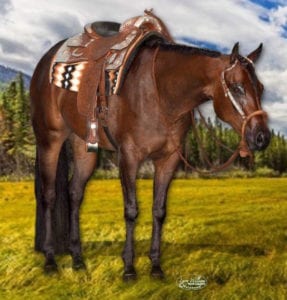 With all the hype, it is hard not to get excited about the possibility of having a horse entered in a Masters Class at the Congress. We wanted to find out what it takes to enter a horse in the Masters and what our experts would suggest to continue to grow this exciting class in the coming years.
With all the hype, it is hard not to get excited about the possibility of having a horse entered in a Masters Class at the Congress. We wanted to find out what it takes to enter a horse in the Masters and what our experts would suggest to continue to grow this exciting class in the coming years.
In order to participate in the Masters class, the mandatory entry fee for the Masters Western Pleasure class is $3500 and the Hunter Under Saddle Class is $2500. Both classes have an August 1st deadline for horse nominations. The difference between the Masters and other futurities is that the Masters has only one go around. (pictured left, Its A Pretty Thing owned by Amy Gumz)
All of the trainers agree that the Masters is a pinnacle event because of the venue and excitement that goes along with debuting maiden two-year-olds. Taft Dickerson and Shane Dowdy think that changing the format of the class to add another go around would increase participation.
“It is a lot to ask of a maiden horse to have a flawless ride their first time out. It is easier to take a gamble on a horse that has never been shown if you know there is another go around if the first one does not go as planned,” says Taft.
According to Shane, “One go puts a lot of pressure on horses and exhibitors and with added go-arounds, the number of entries would increase.”
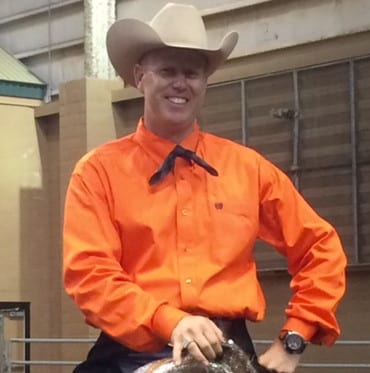 On the flip side, Jay Starnes (pictured left) and Brian Baker appreciate that the Masters is one go around and that everyone is on a level playing field showing for the first time on the same night.
On the flip side, Jay Starnes (pictured left) and Brian Baker appreciate that the Masters is one go around and that everyone is on a level playing field showing for the first time on the same night.
Another suggestion for increased participation is to find a way to keep horses not placing at the top of the class from losing their green eligibility for the subsequent year.
In order to be green eligible, a horse must have less than a thousand dollars in earnings. Heidi Piper admits that many people hold off showing in the Masters because they do not want to lose their horse’s green eligibility for the next year.
“If you have the winner of the class, it is okay to lose green eligibility, but there are several horses that may place down the line that would benefit from green eligibility, especially after only being shown once,” says Piper.
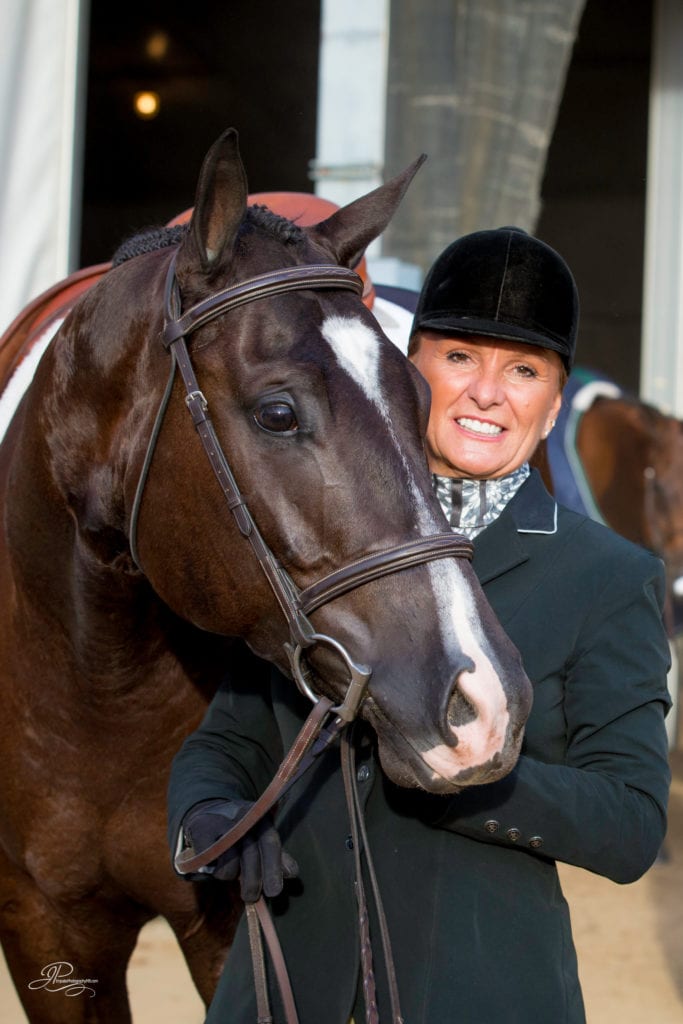 Heidi (pictured right) believes that raising the amount of money a horse can earn and still be green eligible might help to increase entries. “There are very few two and three-year-olds that can go and be competitive on the Junior level and, therefore, when considering entering a class like the Masters, you have to ask yourself whether the value of showing in one class is worth jeopardizing their green status for the next year.”
Heidi (pictured right) believes that raising the amount of money a horse can earn and still be green eligible might help to increase entries. “There are very few two and three-year-olds that can go and be competitive on the Junior level and, therefore, when considering entering a class like the Masters, you have to ask yourself whether the value of showing in one class is worth jeopardizing their green status for the next year.”
All of the trainers and owners agree that paying more money in the class will incentivize more entries. Although entering the Masters class has always been a high-risk, high-reward situation, having more guaranteed money would allow trainers and owners to feel more comfortable taking the risk.
Additionally, many expressed the desire to have fewer prizes awarded and more cash. Brian Baker suggests putting all the money into the purse in order to mitigate the monetary gamble owners risk with all the ancillary fees associated with owning a Masters horse.
“We are all going out there on a gamble and a lot of money has been spent to get there for one class, one go-around, and one shot. Let’s add all the money to the payout and make the class even more exciting.”
Beginning of a Long Career
Although there is a lot of emphasis being put on this huge event, it is important to remember that this is the beginning of these horse’s careers and, regardless of what happens in the Celeste Arena that night, these horses have exciting futures.
We want to wish the best of luck to all the trainers and owners in this year’s Masters classes. Regardless of what happens Saturday night under the bright lights of the Celeste Arena, your hard work and dedication do not go unrecognized and the future of these young talented horses is bright!








